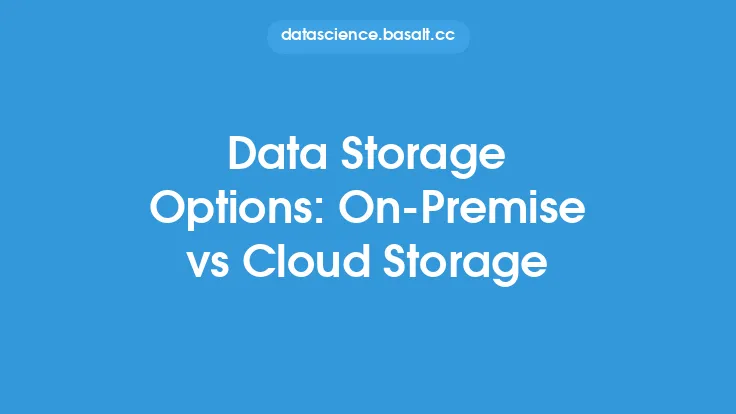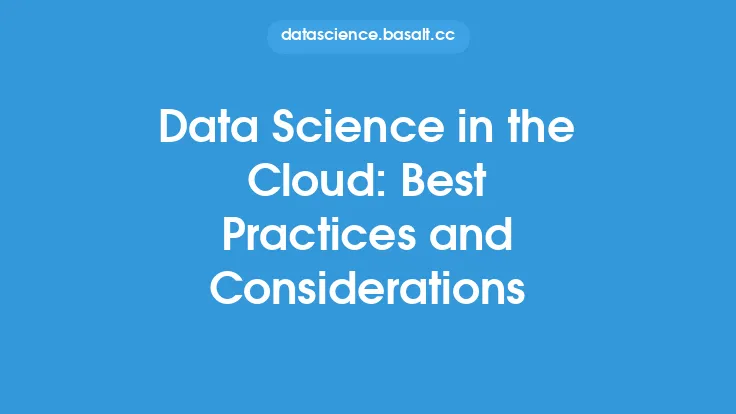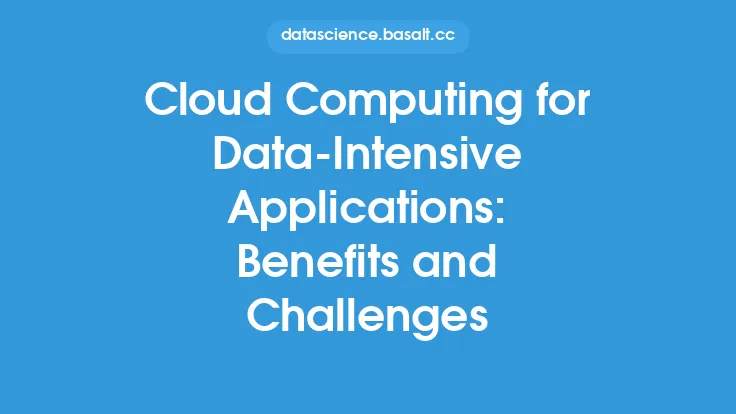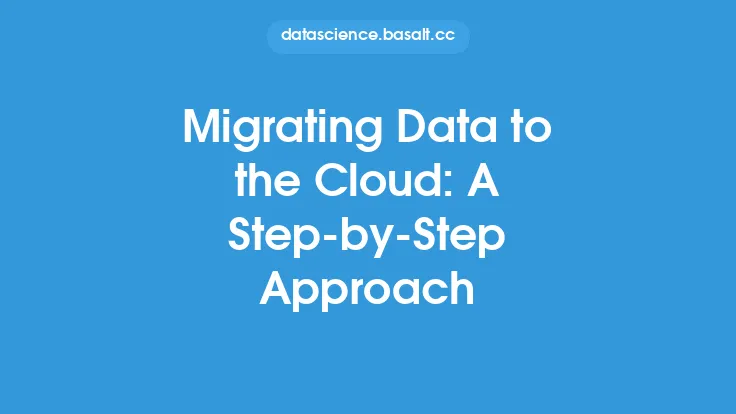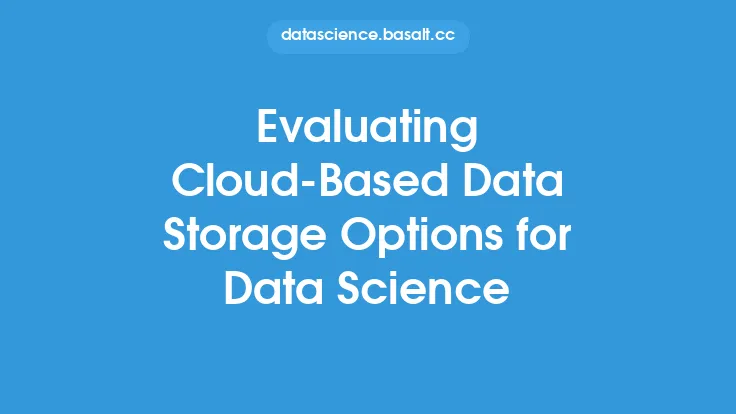When it comes to data storage, organizations have two primary options: on-premise and cloud-based solutions. Both have their own set of advantages and disadvantages, and the choice between them depends on various factors, including the type and size of the organization, the nature of the data, and the level of security and control required. In this article, we will delve into the pros and cons of on-premise and cloud data storage, exploring the key differences between them and helping you make an informed decision for your organization's data storage needs.
Introduction to On-Premise Data Storage
On-premise data storage refers to the storage of data within an organization's own premises, using its own hardware and software. This approach provides organizations with complete control over their data, as well as the security and infrastructure that stores it. On-premise data storage is often preferred by organizations that require high levels of security, compliance, and control over their data, such as financial institutions, government agencies, and healthcare organizations. With on-premise data storage, organizations can ensure that their data is stored in a secure environment, protected by their own firewalls, access controls, and security protocols.
Introduction to Cloud Data Storage
Cloud data storage, on the other hand, refers to the storage of data in a remote location, accessed over the internet. Cloud storage providers manage the infrastructure and maintenance of the storage systems, allowing organizations to store and access their data from anywhere, at any time. Cloud data storage is often preferred by organizations that require scalability, flexibility, and cost-effectiveness, such as startups, small businesses, and enterprises with variable workloads. With cloud data storage, organizations can quickly scale up or down to meet changing storage needs, without having to invest in new hardware or infrastructure.
Pros of On-Premise Data Storage
On-premise data storage offers several advantages, including:
- Security and Control: With on-premise data storage, organizations have complete control over their data and the security measures that protect it.
- Low Latency: On-premise data storage typically offers lower latency, as data is stored locally and can be accessed quickly.
- Compliance: On-premise data storage can be more easily compliant with regulatory requirements, as organizations have complete control over their data and the infrastructure that stores it.
- Customization: On-premise data storage allows organizations to customize their storage infrastructure to meet specific needs and requirements.
Cons of On-Premise Data Storage
However, on-premise data storage also has some disadvantages, including:
- High Upfront Costs: On-premise data storage requires significant upfront investment in hardware and infrastructure.
- Maintenance and Support: On-premise data storage requires ongoing maintenance and support, which can be time-consuming and costly.
- Scalability Limitations: On-premise data storage can be limited in terms of scalability, as organizations may need to purchase new hardware or infrastructure to meet growing storage needs.
- Disaster Recovery: On-premise data storage can be vulnerable to disasters, such as natural disasters or hardware failures, which can result in data loss or downtime.
Pros of Cloud Data Storage
Cloud data storage offers several advantages, including:
- Scalability and Flexibility: Cloud data storage allows organizations to quickly scale up or down to meet changing storage needs, without having to invest in new hardware or infrastructure.
- Cost-Effectiveness: Cloud data storage can be more cost-effective, as organizations only pay for the storage they use.
- Convenience and Accessibility: Cloud data storage allows organizations to access their data from anywhere, at any time, using any device with an internet connection.
- Automatic Maintenance and Support: Cloud data storage providers manage the maintenance and support of the storage infrastructure, freeing up organizations to focus on other tasks.
Cons of Cloud Data Storage
However, cloud data storage also has some disadvantages, including:
- Security Risks: Cloud data storage can be vulnerable to security risks, such as data breaches or unauthorized access.
- Dependence on Internet Connectivity: Cloud data storage requires a stable internet connection, which can be a problem in areas with poor connectivity.
- Vendor Lock-In: Cloud data storage can result in vendor lock-in, making it difficult for organizations to switch providers if needed.
- Compliance and Regulatory Issues: Cloud data storage can raise compliance and regulatory issues, as organizations may not have complete control over their data and the infrastructure that stores it.
Hybrid Approach
In recent years, a hybrid approach to data storage has gained popularity, combining the benefits of on-premise and cloud data storage. With a hybrid approach, organizations can store sensitive or critical data on-premise, while using cloud storage for less sensitive or archival data. This approach allows organizations to balance the need for security and control with the need for scalability and flexibility.
Conclusion
In conclusion, the choice between on-premise and cloud data storage depends on various factors, including the type and size of the organization, the nature of the data, and the level of security and control required. On-premise data storage offers complete control and security, but can be limited in terms of scalability and flexibility. Cloud data storage offers scalability and flexibility, but can raise security and compliance concerns. A hybrid approach can provide a balance between the two, allowing organizations to meet their specific data storage needs. Ultimately, organizations must carefully weigh the pros and cons of each approach and consider their own unique requirements before making a decision.
